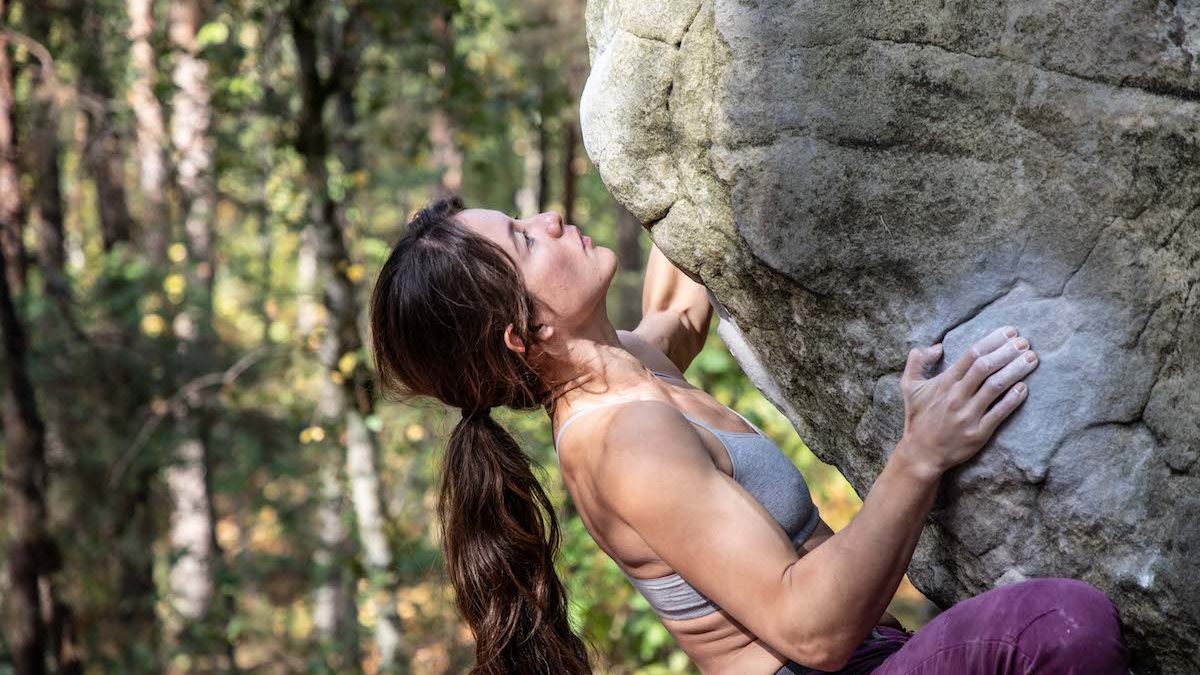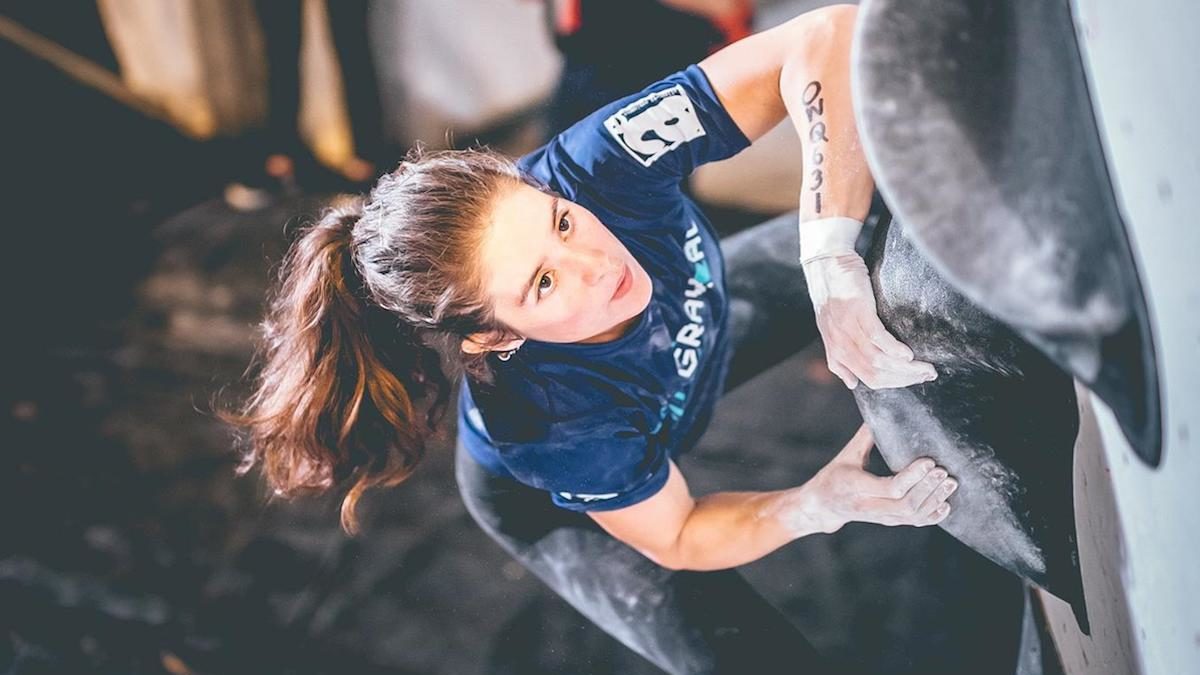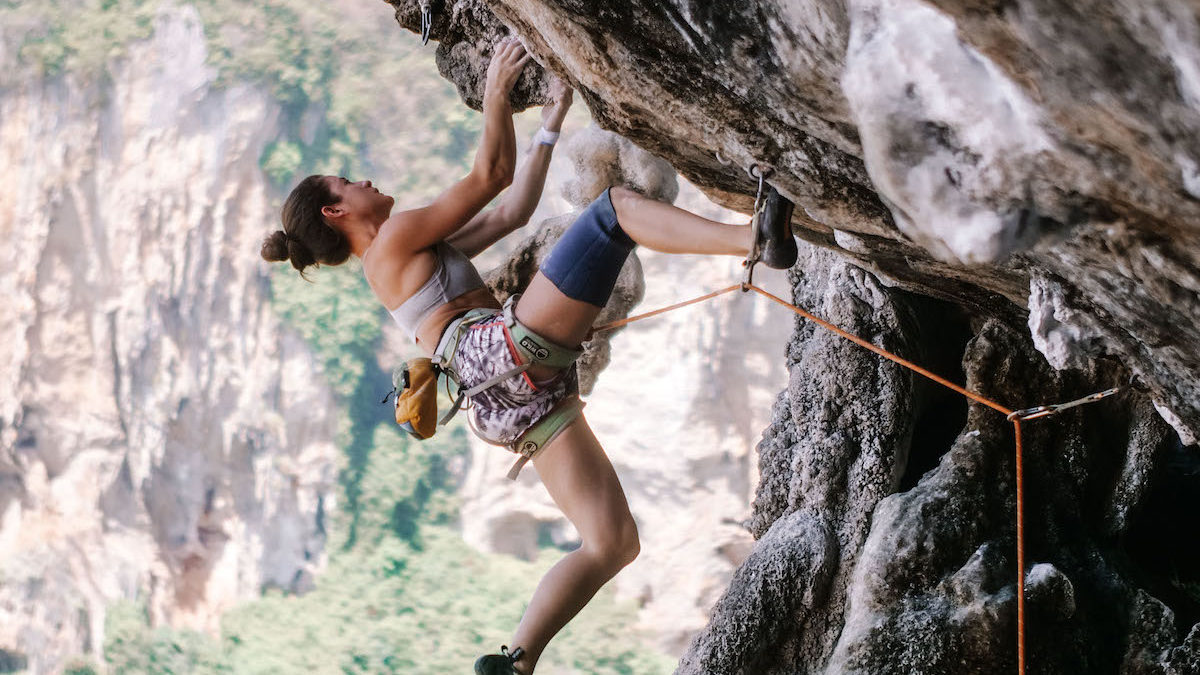Everything You Need To Know Before You Start Climbing

So, you want to be a climber. Maybe you’ve perfected the pull-up and you’re looking to put those upper body muscles to good use. Perhaps you’ve just watched Free Solo, and Alex Honnold’s incredible, daredevil 3000 feet climb up the sheer rock face of El Capitan in California sans rope or anything to make the exercise remotely safe. That would inspire anyone. But it might also terrify some people to the point of putting you off.
“For a lot of folks, this may have been their first introduction to the climbing world and they think that encompasses the sport,” says Tiffany Soi, a wellbeing expert, climber, and the founder of Climbflow, a unique yoga class designed for climbers. “So, it’s good to point out that soloing is an extremely niche avenue of the sport as a whole, and most certainly not the only way to enjoy climbing, nor is it an end goal for the vast majority of climbers.”
There’s a whole range of different climbing disciplines (more on that later) out there, so you’re bound to find one that suits you. To help introduce you to the sport properly, Soi has kindly put together this beginner’s guide including the myriad of benefits the sport can offer you, what equipment you’ll need, the importance of knot-tying and how to push yourself to new heights, figuratively and literally.
The Mental and Physical Benefits Of Climbing
The Physical
When people try climbing for the first time they often mistakenly think climbing is all about the arms, but the legs and core are equally important. In my years of climbing, it’s those who don’t necessarily come into the sport with enormous upper body strength that experience greater progression because they don’t overcompensate with their upper body. They start learning to use their legs and body in much more creative ways to enable them to manoeuvre up the wall.
Climbing develops your proprioception alongside your spatial awareness, coordination, and balance, and of course, overall strength; all useful qualities that translate into a variety of other physical pursuits. Moreover, you will develop a vastly improved grip strength.
Along with being able to haul your supermarket shopping with greater ease, this can be useful for certain martial arts sports where grip strength plays a big part.

Photo CRedit: Thom Arnold
The Mental
The mental aspect is a large part of climbing. Blocs or routes are like mental-physical puzzles where you unlock a sequence of movement: figure out your hand and foot sequence, how to position your body, when to move slowly and delicately, and when to be dynamic. It heightens your sense of self-awareness beyond just the physical plane.
Its engrossing nature has proven very therapeutic for many people and has played a massive part in supporting my mental health over the years. A 2020 study published in the journal BMC Psychiatry, found that psychotherapeutic bouldering was “not only effective in alleviating depressive symptoms but even goes beyond the effect of mere physical exercise.”
Moreover, climbing gyms, and bouldering walls, in particular, can be very social, which is one of the big draws, despite people often starting out in the sport alone.
The Main Types Of Climbing
Bouldering
This has probably become the most popular type of climbing in the last decade as the sport has become increasingly mainstream. You can go solo but equally the social nature ‘on the mat’ has been boosted its popularity.
Bouldering involves walls up to around four metres high with large crash pads (think the one you see gymnasts use) beneath the walls to protect you if you fall off. This discipline has a greater focus on power and strength with problems often only around six moves long.
Indoors the crash pads are in place all around the gym. Outside you carry your mat on your back to a suitable boulder to climb (usually in a lovely spot of nature), so they are smaller than the ones you find inside. Ideally, you would have a few mats between you and friends for safety, and also so you can spot each other should you fall.

Photo Credit: Alex Goh
Roped Climbing
This involves climbing in a pair and using a rope to keep you safe. One person will climb, while the other will ‘belay’ the rope through a safety device to control the rope and protect the climber if they fall off the wall. Indoors, a climb (known as a pitch) is typically 10-20m long. Outside these can be up to 40m long, and you can get routes with multiple pitches. Within roped climbing there are three main types:
- Top Roping: This is where a rope is already fixed at the top of the climb. It is the most easily accessible form of rope climbing for people to get into.
- Sport Or Lead Climbing: Here, you have to clip your rope into ‘quickdraw’ clips on the wall as you climb up (this is the type of rope climbing which will be in the Olympics). If you are outside on real rock, there will be bolts in the wall. You first have to attach the quickdraw clip to the bolt, before clipping the rope into it.
- Traditional Climbing (Only Outside): Here, you just have a blank wall, and also have to place gear into cracks and crevice’s on the face, and subsequently your ropes too.
- Speed Climbing: A more niche aspect of the sport than the main three – the goal is to get up the wall as fast as you can. The same route is practiced indoors and mostly pursued by competitive speed climbers. The speed of these athletes is pretty mind-blowing.
What Equipment Do You Need To Get Started?
For bouldering, you only need climbing shoes, or boots as they are also called, and a chalk bag (chalk will keep your hands dry and help with grip). If you just want to try bouldering for the first time you’ll be able to hire these at the wall. If you catch the climbing bug, they are well worth investing in though as hire fees quickly add up.
If you get your own boots from a good climbing store, you can pick a style that suits the shape of your feet and that makes a huge difference.
In terms of rope climbing, you’ll also need a harness and belay device. You need to do a course first in belaying and rope technique or have an experienced and competent friend teach you. Belaying is an important part of climbing safety. Like driving a car, it’s very safe when you know what you’re doing but less so otherwise.
What Is Rappelling?
Rapelling, or abseiling, depending on which side of the Atlantic you’re from, involves descending a rope by oneself. When you think of films like Mission Impossible where you see people descending a rope down the side of a building, that’s abseiling. It’s an important technique to learn especially if you are doing multi-pitch climbing outdoors. It can also be a necessary way to access certain crags when outside.
The Importance Of Knot Tying
For all types of roped climbing knowing how to tie your knot is essential as you need to tie yourself into the rope every time you climb.
There are two main knots people use to tie in to the rope: A figure of eight (which looks exactly as it sounds when tied correctly and is often the preferred knot that climbing walls will ask you to use indoors) or a bowline (imagine a “rabbit coming out of its hole, going around a tree and back down”).
If you’re climbing indoors that’s probably all you’ll need. When climbing outside you’ll probably want to know additional knots like the clove hitch and Italian hitch as well.

Photo credit: Jo Robbings
Things To Remember As A Climbing Beginner
Hone The Proper Technique
Practice keeping your arms as straight as possible when you move and allow your weight to sink into your feet. Use twisting movements to manoeuvre your body, rather than climbing ‘square-on’ with the face of the wall will help. Use your legs as much as possible.
It’s easy to start over-reaching for holds higher up, and then finding it difficult to bring your body weight up. If you can’t reach the next hold, get your feet higher. Avoid using the midsole of the foot, and instead, stand up and press using the ball of the foot and toes. This will give you much more control and power in your movement.
Regular Sessions Are The Key To Improving
The nice thing about climbing is that with a regular practice (even just once a week) the progress is very tangible, and I find this a really encouraging aspect of the sport. Your first few weeks will undoubtedly be filled with forearm “pump” as we call it, but as your body starts adapting you will find that you can climb for longer and more frequently.
Don’t Forget To Cool Down
Always warm-up before climbing and cool down and stretch after. It will help you avoid tweaking your muscles and help you recover between sessions faster. I have a great ClimbFlow Fit-Yoga warm up on YouTube for climbers to use before climbing sessions that mobilises and activates the whole body.
Hone Your Mind And Body Beyond The Wall
Once you’ve gotten into the swing of things, additional conditioning can help you realise greater improvements. ClimbFlow Fit-Yoga was designed with this in mind, helping to develop greater core strength and stability as well as your flexibility and mobility. It’s a fluid intersection of dynamic yoga movements and strength training specifically to support climbing progression.
A lot of folks will come to me and say “I need to get more flexible to climb better” and while flexibility is an advantageous edge in climbing (you’ll be surprised by the shapes you’ll demand of your legs to make on certain climbs at times), it’s useless if not developed in tandem with strength. You need both.
Practicing stabilisation and antagonistic conditioning of the shoulders and upper body is very helpful to balance out repetitive pulling motion of climbing, and something we focus on a lot in ClimbFlow. Working on your core will definitely help you with some of the more demanding overhanging type climbs and with keeping your feet on the wall.

Photo Credit: Jo Soi



















